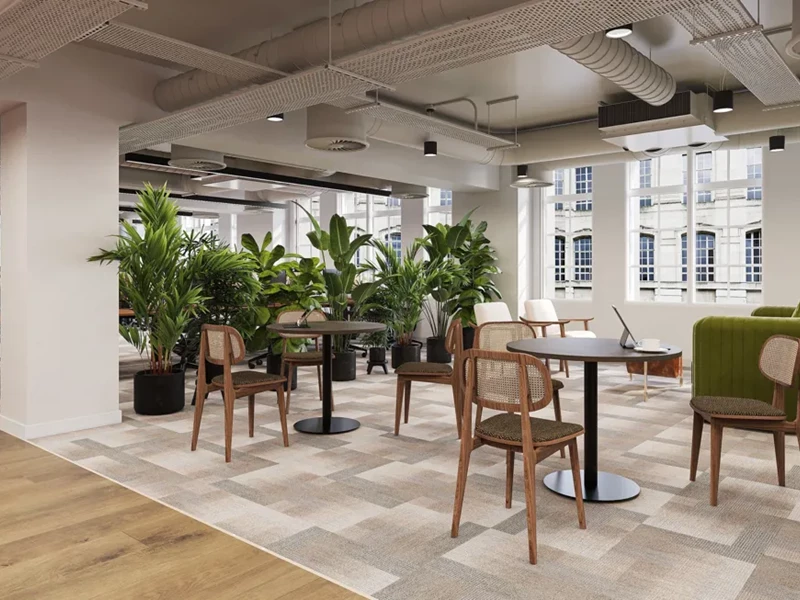As the business world evolves, so does the requirement of an office space. A space with the right technology is now a key requirement for entrepreneurs, with 66% of UK office workers agreeing that having the most up-to-date office technology is crucial for the success of their business. With this in mind, we asked 1,000 UK office employees to rank the technological innovations that they would most like to see to improve the way they work over the next 5 years.
1. Connected tech/integrated devices
Connected technology tops the list as the innovation that employees think will be most useful to improve the way they work in the office in the next 5 years. 45% of respondents put connected technology in their top 3, making it the most popular office innovation. Soon enough, gadgets and gizmos speaking to each other through the internet will be a common fixture in the office, and office workers are gearing up to make the most of the streamlined processes, helping efficiency and giving them more time to focus on their core roles instead of mundane office tasks.
2. Voice-activated tech
Voice activated technology, or speech recognition software, is becoming increasingly popular in the workplace and is reflected in the fact that it is a top want for 23% of the office workers we surveyed. Technology employed by applications like Siri and Alexa will allow workers to create content and presentations, book events in diaries, or even order lunch from the cafe through dictation. This will help make office life more convenient and improve employee productivity.
3. Wireless charging pads
Somewhat surprisingly, wireless charging pads only narrowly miss out on the silver medal position, coming in third with 21% of the votes. Perhaps it is the worry of running out of battery on that important client call, or mid-email, due to the extra firepower they give. Or perhaps employees want to de-clutter their desks in order to help them concentrate – getting rid of all those annoying wires snaking over each other where they work. A tidy desk means a tidy mind, and a tidy mind helps you work better.
4. Virtual reality
A fifth of employees (20%) voted for virtual reality, meaning it narrowly missed out on the top trio overall. More companies are looking at VR technology so that they are able to attend important meetings from their own office, without losing hours out of their week on travel. Indeed, serviced offices are wising up to this trend, with providers like Huckletree providing niche VR rooms for exactly this reason.
Positions 5-10:
5. Interactive whiteboards
6. Virtual assistants
7. AI for manual tasks
8. Biometrics for office security
9. Wearable tech to monitor health
10. Retina scanning/facial recognition for sign-in
As we move down the top 10 list, there are some innovations that may be expected to have featured much higher up. Given that 50% of UK office workers claimed that employee physical well-being was a priority for their company when investing in new tech, it’s interesting that wearable tech to monitor health only just breaks into the top 10 – it could be that monitoring their health is crossing a personal boundary in the employees mind.
As well as this, the AI-based innovations (positions 6 & 7) have come relatively low down the rankings. Considering all the noise surrounding AI and its potential in the last year or two, UK office workers are yet to be convinced of its usefulness within the office environment.
Technology involving security measures, such as biometrics and retina scanning/facial recognition, are down in 8th/10th respectively. It is likely that employee enthusiasm for the implementation of these types of technology increases within roles that require the knowledge of highly sensitive information, within government for instance. Meanwhile, most other office workers probably work in an environment where the risk of security breach is minimal.
By comparing the bottom half of the list to the top 3 technologies, we can see that those innovations that don’t encroach too much on day-to-day office life with a shallower learning curve would be of most use to the average office worker. This contrasts with more experimental AI and security-based technologies which come lower down on the list, as they require more time for the employees to get used to them and would not slot in so easily to their day jobs.







